Table of Contents[Hide][Show]
Remember that sense you had that what you ate yesterday contributed to the breakout you had this morning?
Used to be that science would pooh-pooh that sense, but now we have research showing that you could be exactly right.
In fact, even the American Academy of Dermatology (AAD) now warns that diet can negatively affect skin.
If that’s the case, are there certain foods we should avoid?
We don’t have all the answers so far, but we do know one thing—a high glycemic diet, including simple carbohydrates and dairy products—can increase your risk of acne breakouts and other skin problems.
Why would that be?
Studies Show Link Between High-Glycemic Foods, Dairy, and Acne
A few studies have revealed some interesting things about how the diet can affect our skin.
It’s not so hard to imagine. The skin is the body’s largest organ, and feeds off what we eat just like all other organs. Not so long ago we learned that fatty, greasy food can not only pad our waistlines, but slow our thinking and even increase inflammation in the body, potentially worsening asthma symptoms.
But for the longest time the scientific community didn’t think that diet affected skin—certainly not by causing acne or dryness or other issues. But they’re starting to discover they were wrong.
The strongest evidence we have so far concerns high-glycemic foods and dairy products. Let’s start by looking at high-glycemic foods. These are the ones that break down quickly in the body, spiking blood sugar levels. We’re talking simple carbohydrates like white bread and pasta; sugary cakes, cookies, and sweeteners like corn syrup; white potatoes and corn; non-whole-grain cereals; and processed snacks like potato chips, rice cakes, and pretzels.
Scientists have connected a high-glycemic diet to a higher risk of acne. On the other hand, a low-glycemic diet, consisting of most vegetables, whole grains, most fruits, bran cereals and oatmeal, nuts, olives, lean meats, and eggs, has been linked with a lower risk for breakouts. A 2007 study, for instance, reported that after 12 weeks on a low-glycemic diet, participants experienced reduced breakouts as well as an improvement in insulin sensitivity.
It wasn’t long before studies started lumping dairy into the mix. In 2013, researchers from the Academy of Nutrition and Dietetics reported increasing evidence of a connection between high-glycemic diets and dairy products and acne. This time, they looked at information from studies between 1960 and 2012 on diet and acne, and concluded the following:
A high glycemic load diet and frequent dairy consumption were the leading factors in establishing a link between diet and acne. Though they couldn’t determine that diet caused acne, they could show that it influenced or aggravated it, making it worse.
“The medical community should not dismiss the possibility of diet therapy as an adjunct treatment for acne,” the researchers wrote.
Does Dairy Cause Acne?
The connection between a high glycemic load diet and acne is fairly easy to understand. Foods that spike blood sugar can also increase inflammation in the body, and throw hormones out of balance. Both of these things are factors in causing acne breakouts.
But why would dairy make acne worse?
Scientists aren’t sure yet, but they did find something interesting in 2012: both a high glycemic load diet and milk aggravated a nutrient sensor called “mTORC1 (mammalian target of rapamycin complex 1).”
This nutrient activates certain functions in the body, including inflammation and sebum (skin oil) production. Dairy foods and high-glycemic index foods can cause this nutrient to become “overactive.”
Overactive mTORC1 has been linked with an increase in risk of obesity, type 2 diabetes, and cancer, and now, acne.
“Acne should be regarded as an mTORC1-driven disease of civilization,” the researchers wrote, “like obesity, type 2 diabetes and cancer induced by Western diet.”
The AAD cites several other studies, too, showing a connection between dairy and acne. In 2006, for example, researchers reported that after studying over 6,000 girls between the age of 9 and 15 over three years, they found a link between the prevalence of acne and the intake of milk.
A later 2008 study found similar results, but only with skim milk, not whole milk or low-fat milk. The AAD concluded that more research needs to be done, but that so far, the strongest risk is skim milk, with researchers suspecting that hormones and growth factors in milk potentially playing a role.
Is It About the Hormones in Milk?
Other researchers are suspicious of the way most of our milk is produced these days—and how that may be affecting our skin.
In other words, it may not be the dairy, but the stuff in the dairy that’s causing the issue.
In 2009, for example, researchers delved deeply into the diet/acne connection, and reported that the majority of milk and dairy products consumed in the United States comes from pregnant cows. Thus, the milk exposes us to hormones like insulin like growth factor-I (IGF-I)—which, by the way, has been found to be present more often in people with acne.
Cows in large dairy farms are also typically treated with growth hormones to increase milk production.
Then there’s the question of skim milk and the fact that some studies found it to be worse than whole milk. Did you know that skim milk actually has a higher glycemic index than whole milk? That means that it has a bigger impact on blood sugar, as it breaks down more quickly without the fat to slow it down, which could partially explain it’s effect on skin.
In a 2008 study, researchers looked at the effect of diet on acne in nearly 4,300 participants, and found a connection between skim milk and more breakouts. “This finding suggests that skim milk contains hormonal constituents, or factors that influence endogenous hormones,” the researchers said, “in sufficient quantities to have biological effects in consumers.” They added that milk with added hormones also caused the skin to secrete more oil, which of course led to more acne.
The Harvard Gazette reported on Ganmaa Davaasambuu, a physician in Mongolia and working scientist for Harvard School of Public Health. She stated that dairy provides much of the estrogen that Americans are exposed to today.
“Among the routes of human exposure to estrogens,” she said, “we are mostly concerned about cow’s milk, which contains considerable amounts of female sex hormones.” She added that dairy accounts for 60-80 percent of the estrogens we consume.
As mentioned above, the milk we use today comes from cows that are most often pregnant. The later she is in the pregnancy, the more hormones in the milk. Davaasambuu’s studies showed that modern milk in Japan contained 10 times more progesterone than raw milk from Mongolia. Cows in that country aren’t typically milked while pregnant.
“The milk we drink today is quite unlike the milk our ancestors were drinking,” she said.
Do We Have to Give Up Dairy Entirely?
We already know that eating a low glycemic index diet is good for us overall. Avoiding those simple carbs not only benefits our skin, but can tame inflammation and reduce our risk for a number of serious diseases.
But dairy is not so clear-cut. Yogurt, for example, can be really good for us. So do we have to give it all up?
If you’re someone who suffers from severe cystic acne, or acne that greatly affects your self-esteem and confidence, then taking all dairy products (including cheese) off your list is probably a good place to start. After a few weeks, when your skin starts to clear up, you can experiment with adding back in a few items here and there.
For the rest of us, the best approach may be simply to cut back, and choose wisely. We know that genetics play a role in how well we process and tolerate dairy. One person may have no trouble with it, while another breaks out just thinking about a glass of milk.
We also now know that much of the milk available to us contains hormones that may not be good for us.
One thing we can all do is choose our dairy products more carefully. Here are some guidelines:
- Organic products lack the artificial growth hormones and potential antibiotics that may be present in conventional products.
- Two percent or whole milk may be a better choice, since they are lower on the glycemic scale.
- Raw milk from a local farm you trust (that’s strict about hygiene and the health of their cows) may be the healthiest way to go. Look for grass-fed cows.
- Alternative milks, such as goat’s milk, from small farms may be even better yet. There is some evidence that goat’s milk may be more compatible with human nutritional needs, and may be easier to digest.
Have you noticed a connection between your diet and acne, and with dairy in particular? Please share your thoughts with our readers.
Sources:
The American Journal of Clinical Nutrition – A Low-Glycemic-Load Diet Improves Symptoms in Acne Vulgaris Patients: a Randomized Controlled Trial
Journal of the Academy of Nutrition and Dietetics – Acne: The Role of Medical Nutrition Therapy
Acta Dermato-Venereologica – Diet in Acne: Further Evidence for the Role of Nutrient Signalling in Acne Pathogenesis
American Academy of Dermatology – Growing Evidence Suggests Possible Link Between Diet and Acne
http://www.ncbi.nlm.nih.gov/pmc/articles/PMC2836431/
Dermato Endocrinology – The Relationship of Diet and Acne
Journal of the American Academy of Dermatology – Milk Consumption and Acne in Teenaged Boys
Seattle Organic Restaurants – Milk. Raw Whole Milk vs. Homogenized or Pasteurized Whole-fat, Low-fat or Skimmed Milk. And, Does Milk Cause Infertility?
Harvard University Gazette – Hormones in Milk Can Be Dangerous
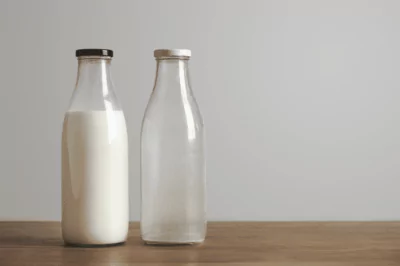

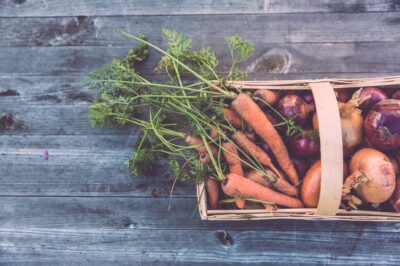

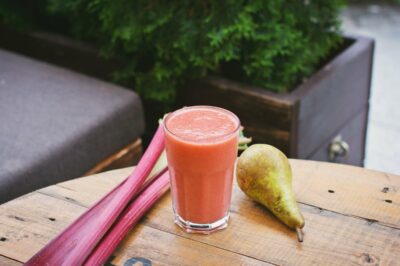
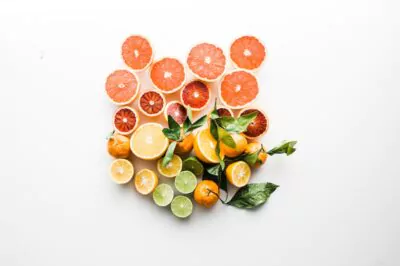
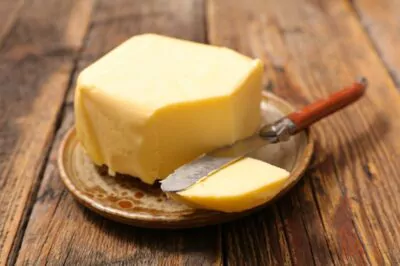
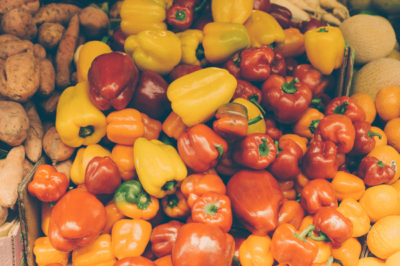
I have cleared cystic acne 3x with low glycemic diet. At the same time consuming raw milk from a local dairy. But have always gone back to sugar..so addictive! This time I did keto diet. Gave up raw milk (high carbs) and started eating grass fed, pasteurized, heavy cream and cheese from the grocery ( for high fat, low sugar) Acne would not heal after 4 months of keto! So I stopped the pasteurized dairy. Acne healed in 5 weeks. I’ve never had any congestion or mucus from any dairy. But I did develop painful cracks all over my lips that healed 48 hrs after stopping cheese and cream. So I guess not an allergy. I’m suspicious of The pasteurization. Searching for others like me.
I so wish I would have read and understood this when I was a teenager. Instead, starting at the age of 12, I experienced horrible acne. My Mom took me to the dermatologist and I was put on round after round of oral antibiotics, so many different varieties that I can’t remember them all. I also used topical creams and wen on two rounds of Accutane. If I could take it all back, I would! I know we ate a lot of dairy in our house hold. I was always trying to lose weight so more than likely I was drinking skim milk. I ate cottage cheese, cheese and milk. We were a dairy household! Now, I have horrible digestive and sinus problems that are probably linked to all the antibiotics and Accutane I took as a teenager and young adult. I eat a mostly paleo, 100% whole foods diet now. I haven’t had skin problems for a number of years. I’ve recently decided to give up dairy for good and this article just helped put a nail in the dairy coffin!
There is a lot of cruelty and abuse in the dairy industry which is enough reason not to eat/drink dairy. Plenty of good alternatives.
There’s no connection between dairy (if it’s hormone free, organic, raw, etc.) as far as I can tell. I do notice acne breakouts when I eat refined sugar or too much processed food and when I don’t eat enough fresh greens. Drinking lots of water with lemon or alkaline bottled water really helps keep my skin clear too. Also, getting a proper amount of sleep is critical to clear skin too.
My story: I’ve never been a big milk drinker but I love cheese, some yogurt and double cream in my coffee. Last summer I went through an elimination diet and after 3 weeks was basically eating veggies and it was time to reintroduce other food groups. I felt amazing. The first food was cheese and a little whey protein and a scoop of plant based protein in my morning shake. At the same time during the month of Aug major stress was brought on by family and work. My face popped some zits and my doctor said I had contact dermatitis or eczema in the small of my back (something I haven’t had since a little girl – when I was a milk drinker – hmmmm). My diet had been so clean and my family hacker, oops I mean family doctor said I needed to increase protein and to use whey protein in the morning. I did and overnight my entire body was like sandpaper with more pimples on my face. WTF!!!! Meanwhile I was reading The Virgin Diet, in which she says an intolerance to dairy may cause skin problems. Light bulb moment! – it was a Thursday, all dairy and whey was removed from my diet and by Monday my skin was glowing and baby-smooth again. I’m 47 years old and have had nice skin but never perfect, always a couple zits on my face, now my skin glows and is so smooth, something I never had in childhood and early adulthood, I actually had a complex about my skin. I have to contribute the change to diet and Annamarie’s products. Thank you.
Changing my diet was absolutely the best way to heal my acne. Cutting out dairy, sugar and flour helped a lot.
Very informative article! Let me start by saying I am a vegetarian with a litany of food allergies (dairy included) – hence the vegetarian diet. Although I know eggs are not considered dairy, I have found that the more I consume them (I love eggs), the more acne flair ups I have. How do I know this? I tried cutting back on eggs for a few days, and the acne started clearing up. So, instead of eating eggs every day, I limit my egg intake to 1 to 2 times per week. Because of this change, I have very little acne. How can this be? Does this mean I am allergic to eggs? Ugh! Again, thanks for the great read. 🙂
Excellent article! For me, dairy definitely aggravates my severe cystic acne. So do grains. I struggled for 30 plus years, even though I tried every possible medication (including accutane) and ate a pretty clean diet. When I finally (in my mid 40s) cut out dairy, grains, and refined sugar, my face cleared almost overnight. Then my skin got even better as I discovered foods that really helped it, and added high quality skin care (I am pretty much exclusively Annmarie Gianni now) I believe what we put in our body definitely has an affect on our skin. But not everyone is sensitive to dairy. Now that my face has been clear for years, I am fine with some pastured butter or ghee. I never have gluten containing grains, but very rarely may have some rice with sushi, or quinoa (I know technically not a grain.) I talk about this a lot on my happy, healthy and hot blog, and have tons of reviews posted of Annmarie Gianni products, since I have seen such great results.
As a health coach I was familiar with the issues surrounding dairy but it wasn’t until I was personally experiencing hormone related acne on my chin that I decided to eliminate it from my diet. Although my dairy intake was minimal and for the most part only organic I decided to give it a test. As an adult the last thing you want to worry about is acne!!
After only a couple months I noticed a significant decrease in the amount of breakouts. I rarely have them now, and when I do I pay special attention to what I have eaten that may have contributed. Feeling healthy and having great skin certainly comes from the inside out!
Great article! We will definitely share with our community!
There is no doubt in my mind there is a link between Dairy and Acne.
I was in my 50’s and still having skin issues. I figured I would have pimples even when I was 100 yrs old. but I did a cleanse and gave up Dairy for 2 weeks and couldn’t believe the difference in my skin.
Then with what I learned during the cleanse about the growth hormones in milk and the link of milk drinkers to osteoporosis etc… I just cut it out. And guess who doesn’t get pimples anymore?
Previously I drank non-fat and sometimes 1%. I drank a lot of milk based on the myth of “stronger bones”.
I don’t need science to tell me and skin says it all!
YES! Giving up dairy will clear your face — particularly if you are sensitive to casein, the protein in dairy. Way back when my youngest (now 20) was a baby I was having horrible symptoms (chronically fatigued, horrible sinus issues, panic attacks while driving — nothing that I could connect. My very forward thinking MD asked me to do a blood test (RAST) to check for food sensitivities that had to be sent to CA and it would take 6 weeks to get the results. During that time he asked me to do an elimination diet of wheat and dairy. I thought I’d die! But I complied and in 6 weeks when I went in to get the results I was a new person — he asked how I felt and I told him I had more energy, my sinus drainage had cleared and the best part of all, my face was the clearest it had been in years! He smiled and said, that would be the dairy. And sure enough, I was off the charts on my sensitivity to both. For the most part, I don’t have dairy, but when I do, I pay for it dearly with a week’s worth of cyst-type breakouts usually on my chin/jawline. I will always look longingly at a piece of gooey pizza dripping with cheese, but I ask for feta (goat’s milk, no casein) instead and have learned to live with it.
I was just wondering about the topic of dairy and whether it caused acne yesterday.I am going to experiment cutting out my morning cup of coffee to see if there will be any improvement in my skin and hormones.I think it has a negative impact considering the insulin spike of the sugar and adrenal spike of the caffeine.I’ve been drinking non-organic half&half as well.However,my mom has a couple of cups in the morning(prepared the same)without the effects I suspect in myself.I will need to ween my reliance since I can’t have coffee in boot camp though anyway.It is my first love unfortunately.
I’ve heard from Dr.Mercola that pasteurized milk makes the sugar content in milk more refined,causing an insulin spike.
I will continue to consume whole milk,low pasteurized,unhomogenized yogurt mixed with almond milk and raw cheese.